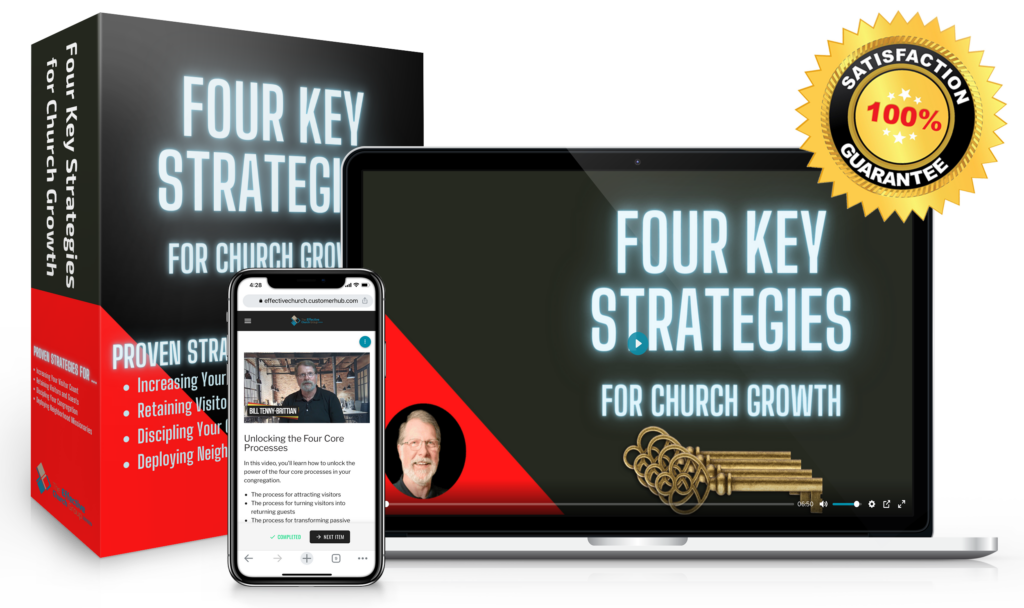This morning, I had the opportunity to reach out to a colleague who was struggling to grow his church. He was averaging about twenty-five, but on Easter there were over 100 who showed up. Since then, though, his congregation has been mostly unwilling to step up to do the work of transformation. He was asking for some suggestions and my one-paragraph “You’ve got this!” encouragement turned into a short strategy session for turning a tiny church into a sustainable one.
Here are the quick details: Addressed to the pastor of a small church in a small town. Average worship is around 25. Average age is 70ish and they’re mostly “tired.” The church has a couple of young families who are (naturally) very busy. Seating capacity is 100 in the sanctuary. The congregation is generally friendly and would like to grow – at least, that’s what they say.
With only a couple of edits, the strategy session I had with the pastor is posted below.
Hey Pastor! In the good news department, you’re not alone. The average size of a US church is around 60 in worship and the average age of the members is coincidentally around 60. In general, the smaller the church, the older the average church member.
Turning around a church, regardless of how big or small it is, is arguably the most difficult task in ministry, followed at a distance by a parachute drop church plant by a solo pastor. Which is to say, you’ve got a long row to hoe.
As you’ve discovered from both experience and from other pastor’s you’ve connected with, getting the existing members on-board for church transformation activities is fraught with difficulties. It seems mostly there’s an attitude, “We’ve done our part, it’s time for someone else to step up. We’re tired.” (Never mind that all of us are tired these days!)
To move from a tiny church to a sustainable one, you’ll need to engage some clear strateties.
1. Set a Foundation
First, get your congregation’s mission, values, and vision really really clear. The vision needs to be compelling to you, to the congregation, and to potential new people. That’s the foundation you’ll need to work from.
(BTW, I have a Pastors-Only Facebook Group that includes weekly resources and conversations about mission and values and vision and strategies. If you’re not signed up, it’s free for pastors and church professionals.)
2. Get a Follow-Up Strategy
Second, put together a follow-up strategy and enroll a couple of your member-families in that process. (I really like getting a Lunch Bunch crew who invites first-time visiting families to lunch after church “next week.” – there’s more to it than that, but get part 1 going and you’ll likely see your visitors returning.) Your follow-up strategy needs to include a handwritten note, a gift of value that’s delivered with church info on Sunday afternoon, email/texting follow-up later in the week, etc.
Once you have a good follow-up process in place, then implement it with each first-time visitor and turn them into returning guests.
3. Connect Guests to You, to the Members, to the Church, and to Jesus Christ
The third strategy is to connect your returning guests to your church, your church members, and most importantly to each other. I always recommend a Sunday afternoon “Intro to First Church” lunch with the pastor. This is a 90 minute class or so, adults only (make sure you provide lunch and childcare for the kids), that introduces them to the church, to the gospel, and to their “Next Step,” whether that’s baptism, attending a small group (that you may have to start to begin with), engaging in some local mission project with other members, becoming a member, etc. The goal of the class is to get the guests to make some sort of commitment to further their engagement and to get them better connected with you, a couple of church members, the church at large, and of course Jesus Christ.
4. Make Effective Disciples Out of Them
From there, it’s about a discipleship strategy and then getting them out the door and trained as neighborhood missionaries.
Conclusion
I’m sure that there’s some energy around launching a new service for the younger families, but that should probably be put off for awhile. Make sure your existing worship service is “I’ve never been to church” guest friendly and that your members are really good at letting NO ONE fall through the hospitality cracks, and you’ll have 3/4 of the battle won – rock-n-roll worship or not!
Great hospitality, Great follow-up, and a Clear disciple-making path will get you to your Easter numbers and beyond … at which time you’ll have to start a new service because you’ll have reached capacity.

Need more strategies to grow your church? In Four Key Strategies for Church Growth you’ll discover the four things every growing church focuses on for growth. Whether you’re in a Tiny Church or a Mega Church, when you focus on implementing these Four Key Strategies, the only way you’re going to go is UP.
Grab the Four Key Strategies to Church Growth and turn your first-time visitors into returning guests; your returning guests into disciples of Jesus and faithful members; and your faithful members into neighborhood missionaries.
Three Videos; Workbook; Two Bonuses; and a One-on-One Strategy Session … valued at almost $500. We’ve discounted the investment to a ridiculous $37.00 for a limited time.


